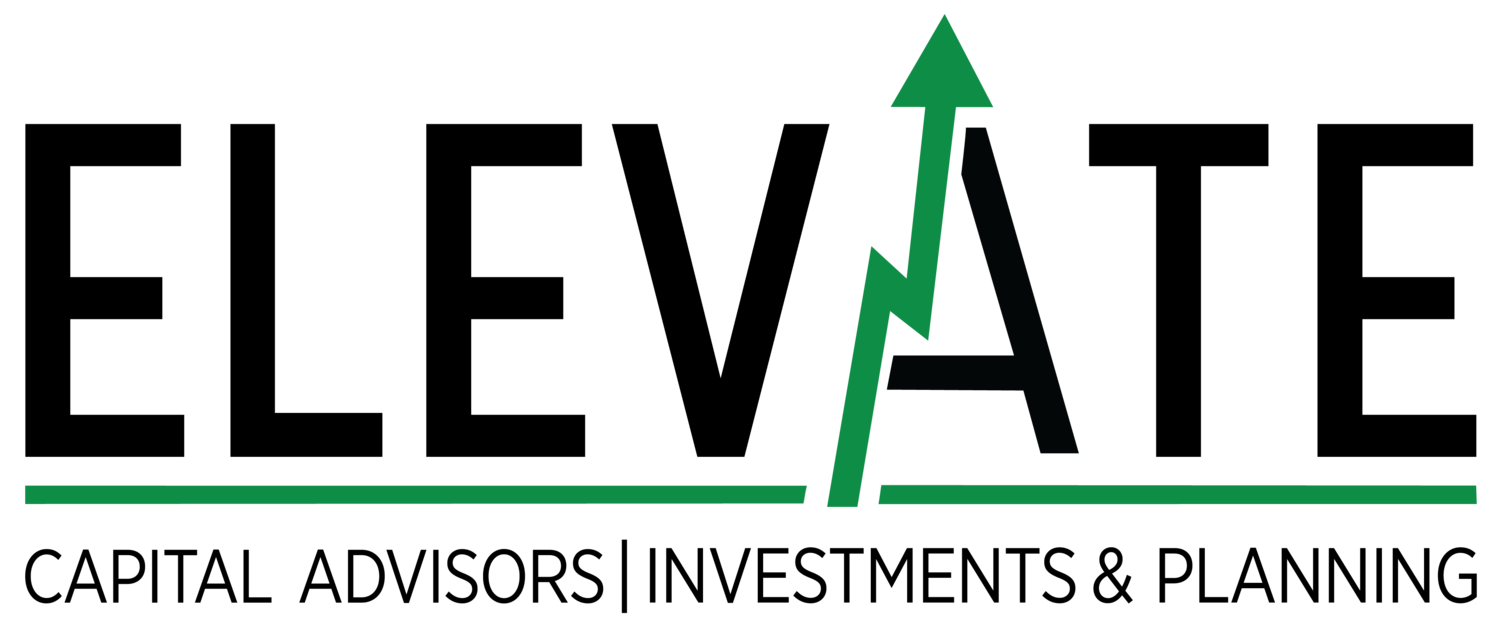Market Commentary
The last time I wrote to you was July 15th. In that commentary, I cited the work of a long-time "mentor" of mine, Porter Stansberry, who proposed that buying stocks then, particularly technology stocks, would lead to poor returns for years.
The S&P 500 rose to an all-time high the following day (July 16th) before falling 9.71% to its intraday low on August 5th.
By the time my July commentary was published, the Nasdaq 100 had already peaked on July 10th. It ultimately fell 15.73% to its intraday low on August 5th. The Russell 2000, which I highlighted as being down in June, was rallying to its highest levels since 2021 amid what the financial media ended up (shortsightedly) calling the "Great Rotation."
The Russell 2000 rose 12.83% in just nine trading days and was up as much as 13.91% during the day on July 31st.
"Everyone" was talking about how "everyone" was rotating out of their mega-cap Magnificent Seven positions and into small caps and how "everyone" else better get on board before they missed their chance.
By the morning of August 5th, the Russell 2000 had dropped 13.34% from the July 31st high, more than erasing its entire rally.
So much for the "Great Rotation." At least for now.
The drop in the S&P 500 is (so far) still not quite enough to trigger the formal definition of a technical correction. A formal correction needs to see the market drop 10%, and arguably, that drop should probably be on a closing basis, not an intraday basis.
What I mean is that the market should close for the day 10% (or more) lower than its most recent highest closing price. A drop for a few seconds in the middle of a trading day shouldn’t really count for as much. Intraday prices are important and provide useful information, particularly for shorter-term traders, but closing prices offer a more reliable indicator for assessing longer-term trends and market sentiment for investors.
For me, the difference between 9.71% and 10% is negligible but to be fair, let’s call it a near correction. We just experienced our first near correction in the stock market since October 2023. That is a long run. At that time, the S&P 500 had dropped 10.92% from its high on July 27th. So, that correction took three months to fully develop. This one took just 20 days… so far.
The question we need to be asking now is: Was this near correction the first 10% in a more significant move lower, or just a healthy technical correction within the context of a longer-term bull market?
If it was the first 10% in a more significant move lower, I would expect a bounce from the August 5th low to a new "lower high" before resuming the downward trajectory.
But if the markets can bounce high enough to break above the downtrend shown in the chart above by the downward-sloping purple line, and then above the 50-day moving average shown by the red line, then it was probably just a healthy technical correction and a dip that we should be buying aggressively.
The big problem is that we can't know how it will turn out in advance. All we can do is prepare for either outcome.
Today, all three markets—the S&P 500, Nasdaq 100, and Russell 2000—have bounced nicely from their August 5th lows. We have bought the dip in many of our positions that dropped with the markets and added new positions.
Below you can see how the indexes we’ve been tracking looked for the month, and year-to-date as of the end of July.
Claudia Sahm is currently the Chief Economist at New Century Advisors. According to her LinkedIn profile, she is "a highly regarded expert on monetary and fiscal policy with many years of experience advising key decision-makers at the Federal Reserve, White House, and Congress." She worked at the Federal Reserve for over 12 years, from 2007 to 2019, and earned her Ph.D. in Economics from the University of Michigan.
She developed a recession indicator, creatively named the Sahm Rule. The indicator is designed to provide an early signal of a recession based on changes in the unemployment rate. Specifically, the rule states that a recession is indicated when the three-month moving average of the national unemployment rate rises by 0.5 percentage points or more above its lowest point in the previous 12 months.
The Sahm Rule has been “100% accurate” going back to every single recession since the early 1970s. In each instance, by the time the rule was triggered, we were already in a recession. That 100% accurate claim is a little misleading… but it is widely touted on Wall Street. While it is true that there hasn’t been a recession without the Sahm Rule being triggered, there was one false trigger back in 1976. So, 100% of recessions see the Sahm Rule trigger and eight out of nine (88.9%) of Sahm Rule triggers come with a recession if you want to get technical.
Would it surprise you to learn that the rule was triggered on Friday, August 2nd?
It doesn't surprise me, as you may have guessed.
But this time is different... (this phrase should raise your eyebrows) or so they say.
As you can imagine, there has been no shortage of financial news articles about the rule being triggered. Some of them predict the end of the world, but many more than I would have expected say this triggering of the Sahm Rule is no big deal.
JP Morgan Private Bank wrote:
"The Sahm Rule may be overstating recent economic weakness, especially in the labor market. There’s no denying the decrease in jobs being added reinforces a slowing economy, but we think the labor market data is pointing toward an economy that is closer to full employment (with pickups in labor force participation, minimal layoffs and stable aggregate demand), rather than a recession characterized by a pickup in layoffs and a collapse in aggregate demand. The rise in the unemployment rate is due to increased labor supply, not weakening demand for workers—a stark difference from past recessions."
And the one and only Claudia Sahm shared:
“The US is not in a recession, despite the indicator bearing my name saying that it is. The Sahm rule, which was triggered with Friday’s weaker-than-expected jobs report, joins a long list of economic tools skewed by the unusual disruptions of the past four and a half years. That said — and I say this with a mixture of humility and concern — the Sahm rule is still relevant…”
In a podcast interview, she also said that the rule had been "used and abused" and went on to say, "I wish it had a different name that didn’t involve my name."
Too bad it works so well!
Who knows? Maybe this time is that rare false signal. Time will tell, but I won't be surprised if this time is nuanced, just like all the others, and we are ultimately in a recession already.
Other recession indicators are flashing warning signs as well. One we have looked at many times in this commentary is the difference in yield, or the spread, between the 10-year treasury yield and the 2-year treasury yield.
As a quick refresher, the 10-year US Treasury normally pays a higher interest rate than the 2-year US Treasury. But sometimes, during times of high economic uncertainty, these flip or invert, and the 2-year pays a higher interest rate than the 10-year, which has been the situation for the past two-plus years.
Well, history says that when the spread "reverts" to its normal shape from being inverted, a recession is right around the corner. Right now, the spread is very close to reverting.
Fed statement from July 31 vs. prior statement.
These recession indicators have spooked the Fed to the point where the market expects them to cut interest rates in September. If they do, and they probably will, the action will probably reignite inflation, which still hasn't fallen back to the stated (and arbitrary) 2% annual target.
The Fed met in July and left rates unchanged. In his post-meeting press conference, Chairman Powell appeared somewhat rattled to me. He said the committee had not yet decided what to do at the upcoming September meeting.
However, by pricing in expectation of a rate cut via the futures market, traders may force the Fed to act. The Fed has historically shown an unwillingness to surprise the market. If we get all the way to the September meeting, which ends on the 18th, and the Fed Funds Futures market is still expecting a rate cut, the Fed will probably cut, for better or worse. However, this is the same Fed Funds Futures market that, at the beginning of the year, was pricing in six rate cuts in 2024, and so far, we've gotten zero! So, a lot can change between now and September 18th.
Inflation numbers for July will be reported on Wednesday morning. Economists expect prices to rise by 3% from a year ago. Remember that this is a full 1% higher than the stated target of 2%. So, it is not a foregone conclusion that the Fed will cut rates. Suppose this number comes in higher than expected. In that case, the chances for a rate cut in September will probably fall precipitously—potentially taking stocks (and bonds) lower.
Due to base effects, I expect July and August inflation to be relatively tame. After that, the base effects get tougher, and I could see inflation begin to tick higher once more. The timing of the August inflation data, which will be reported just before the Fed has their meeting in September, could be problematic. If they use that report to decide to cut rates just before inflation begins to tick higher, it could turn out to be a major policy mistake. And we will all pay the price at the grocery store and everywhere else we spend money.
Just because the Fed sets the overnight lending rate, which then influences rates throughout the economy, doesn't mean it controls all the interest rates. Interest rates are still heavily influenced by supply and demand. Foreign demand for United States Treasury debt has declined for a little over a decade, with many foreign central banks opting to hold more gold instead (I covered this in my June commentary).
Consider that our National Debt just broke the $35 trillion mark. That is A LOT of supply of debt. Is there enough demand to match? Or must interest rates rise even further to attract buyers, regardless of what the central bank wants to do?
We are dangerously close to, if not already in, a situation called "Fiscal Dominance," where the central bank's ability to influence inflation and manage the economy is compromised by the government's decisions to spend money it doesn't have by running massive deficits year after year.
Sound familiar?
Key characteristics of fiscal dominance include:
High Public Debt: Remember that $35 trillion?
Large Budget Deficits: So far, in 2024, we have already spent more than $1 trillion we don't have. By year-end, the Congressional Budget Office (CBO) expects the deficit to be $1.6 trillion... for this year alone. According to CBO’s projections, federal budget deficits total $20 trillion over the 2025–2034 period, and federal debt held by the public reaches 116 percent of GDP. More than half of the projected deficit is just due to interest costs! We get nothing for it.
Inflationary Pressure: We'll need to print the money to pay our interest bills since we don't have any money to pay it with otherwise, thus creating (even more) inflationary pressure.
Reduced Central Bank Independence: We may be in the early stages here. If the Fed raises rates to combat inflationary pressures, matters will only worsen, so they lose independence. Maybe those with political power even use that power to pressure the Fed to implement yet another round of quantitative easing, where we buy our own debt, thus artificially increasing the demand side of the equation but also creating evermore inflationary pressure in a vicious positive feedback loop that ultimately ends in default.
The only real way (that I can see) to avoid this outcome, or something similar, is to elect leaders willing to balance our national budget and immediately stop spending money we don't have.
Politicians on both sides of the aisle seem equally unwilling to take the steps necessary to prevent this outcome, so far as I can tell. And voters just don't seem to get it.
It seems that many CFA Charterholders don't get it either. I actually received a survey from the CFA Institute last month titled: "Do debt and deficits matter?"
How is this even a legitimate question? I have yet to see the survey results, but I will do my best to report back when I do.
The market is probably at an inflection point of some kind. Either we have a nice dip to be buying within the context of a healthy bull market, or we have a little bit of a bounce to be selling into in preparation for a new bear market. Only time will tell. The fundamental economic indicators I follow lead me to lean bearish. However, the market has not respected these indicators for a long time, so I will not be surprised to see new highs first. As always, we are prepared for a wide range of outcomes.
I will leave you with a few comments from the recent Clorox earnings conference call. You will notice a common thread.
As we look ahead to fiscal year 2025, consumers will remain under pressure
I think moving forward, as we look at the year, and to your point on front half versus back half, we continue to assume that the consumer will be under additional pressure
everybody is really attuned to delivering for consumers, given how stressed they are
the consumer is stressed in general, but our categories have been resilient, and they're where we expected them to be. They're a bit softer, which is exactly what we experienced in times when the consumer is more stressed.
consumers are more value-focused
a good example of what the team is getting laser-focused on value, and we're bringing in consumers, who maybe can't afford anymore to buy a cleaner and an air freshener, and they're getting a great value by having an all-in-one product with Clorox Scentiva.
Until next time, I thank God for each of you, and I thank each of you for reading this commentary.
Clients, I encourage you to click here to access your personalized performance portal to see how your portfolio performed vs. the markets last month.
Shane Fleury, CFA
Chief Investment Officer
Elevate Capital Advisors
Legal Information and Disclosures
This commentary expresses the views of the author as of the date indicated and such views are subject to change without notice. Elevate Capital Advisors, LLC (“Elevate”) has no duty or obligation to update the information contained herein. This information is being made available for educational purposes only. Certain information contained herein concerning economic trends and performance is based on or derived from information provided by independent third-party sources. Elevate believes that the sources from which such information has been obtained are reliable; however, it cannot guarantee the accuracy of such information and has not independently verified the accuracy or completeness of such information or the assumptions on which such information is based. This memorandum, including the information contained herein, may not be copied, reproduced, republished, or posted in whole or in part, in any form without the prior written consent of Elevate. Further, wherever there exists the potential for profit there is also the risk of loss.






